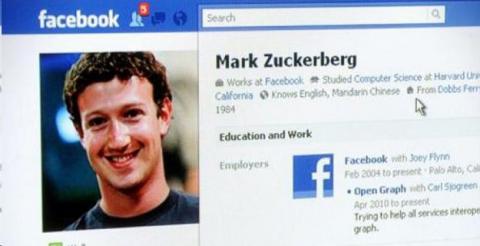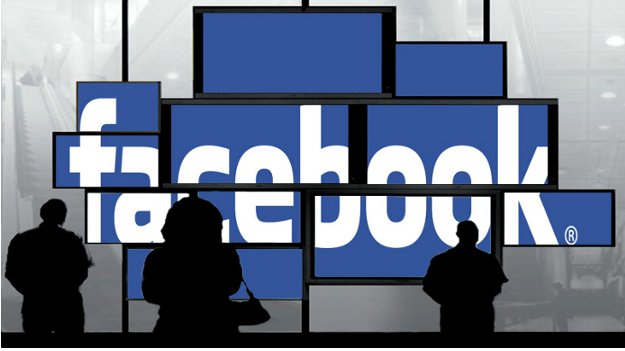10 Years Later: Where is Facebook Headed Next?

On February 4th Silicon Valley popped corks to celebrate Facebook’s 10th birthday. What began as a relatively exclusive event for the East Coast elite, very soon hit a central nerve and changed the way 1.23 billion people worldwide communicate, interact, engage, catch up, and bristle. Let’s think about those two numbers for a moment: A company that didn’t even exist 10 years ago, has as many users as India has denizens.
They post, share, poke, follow, comment, update, edit, and are doomed to like everything, even the things they don’t. Oh no! Your dog died? Up goes the little blue thumb. The sum of all these activities is an entirely new texture of news and entertainment that has little in common with a newspaper column or TV program. It’s a live-feed of the here and now and everywhere at once, a collective stream of consciousness, and we’re the reporters, equipped with an immense distributive power and “the global reach formerly reserved for kings, presidents, and movie stars
Wherever our real bodies may be, our virtual personae are being bombarded with information and missives.” Our Like-Universe (no pun intended) is “always-on, constantly pinging us with the latest news … all pushing their way to our smart phones … Every one and everything intrudes with the urgency of a switchboard-era telephone operator breaking into a phone call with an emergency message from a relative, or a 1960s news anchor interrupting a television program with a special report about an assassination”, as the media theorist Douglas Rushkoff stated so fittingly in his most recent book Present Shock: When Everything Happens Now.
How did Facebook become and sustain itself as this remarkable reloading point for digital material, despite all the controversy about its user conditions that the quoted $135 billion company likes to change every so often for its own benefit, and the never-ending rumors about its nearing decline?
The most recent and amusing example of these speculations was released by scientists from Princeton University who, based on Google trends, predicted that by 2017 Facebook will loose 80 percent of its users. They compared the network to a disease that spreads epidemically in the beginning but gets eradicated eventually by people becoming immune to it. Facebook’s smashing response to this patchy study beats Princeton at its own game suggesting that the Ivy League university will have no students by 2021, and our planet no air left by the year 2060.
Since the beginning of its exponential growth, both Facebook’s financial and media status have been the subject of extensive speculation. Post IPO it mainly evolved around questions like: Will the company be able to remain in force in the mobile market? Will it keep growing at the same spectacular pace? What precisely is Facebook’s business model? Though Facebook is one of the main instigators of the technological shift we’re currently experiencing, it has to stay far ahead of the curve if it wants to keep its impatient, distracted, and ever-demanding users entertained and to remain the phenomenal example of Metcalfe’s law.

“Facebook’s challenge is to keep growing”, write Brad Stone and Sarah Frier in Bloomberg Businessweek. “With almost half the world’s Internet-connected population using the service, the company is facing the immutable law of large numbers and simply can’t keep adding users at its previously torrid rate. At the same time, Facebook must defend its highly profitable business against several threatening trends. Internet users — particularly young ones — crave different kinds of online experiences and new ways of connecting with one another.”
And then there are of course those other little annoyances that the social service has to deal with on a regular basis, namely the halfhearted protests evolving around privacy and advertisement. But no matter how much the users complain, most of them stick around. It seems as though Facebook still holds the key to what AOL desperately tried to achieve in the ‘90’s: to turn the open and adventurous World Wide Web into a closed system, a cocoon that is seducing us with its conveniences and comforts. Facebook doesn’t function because it provides us with more possibilities of communication, but because it reduces and manipulates them by observing our personal and public online behavior and modifying its algorithm accordingly.
John Naughton, the author of From Gutenberg to Zuckerberg: What You Really Need to Know About the Internet, compares this business model to that of the US National Security Agency: “The difference is that while it’s impossible to know whether the NSA’s surveillance is a cost-effective way of achieving its mission, there’s no doubt that Facebook’s monitoring of its users is paying off, big time – as evidenced by its quarterly results, released last week. The company had revenues of $2.59bn for the three months ending 31 December – up 63 percent from the same time last year; and for 2013 as a whole it had revenues of $7.87bn, up 55 percent year-on-year. Its profit last year was $1.5bn.”
Through personalized advertisement and the integration of other online services (I can buy from Amazon or Ebay without even visiting their website), Facebook becomes the overall service provider. There’s no need to leave the cocoon to browse other websites.
What will the next 10 years bring? In view of the fact that the Internet is constantly in motion, that is impossible to tell, though Zuckerberg gives us a little glimpse of where his company is headed and what precautions it is taking to appease the peeved user: “Paper.” Developed by Facebook Creative Labs, a new company initiative charged with moving the company toward becoming a diversified app power, this standalone app is the social network’s new mobile newsreader that looks nothing like Facebook. Facebook isn’t waiting for its competitors to program alternatives. With the new app it has created its own alternative. Facebook isn’t dying anytime soon. In case it does, it will make sure to transplant itself and live on in another body. But for right now, let’s watch it grow up.
Author Bio:
Karolina Swasey is a contributing writer at Highbrow Magazine.































































































































































































































































































































